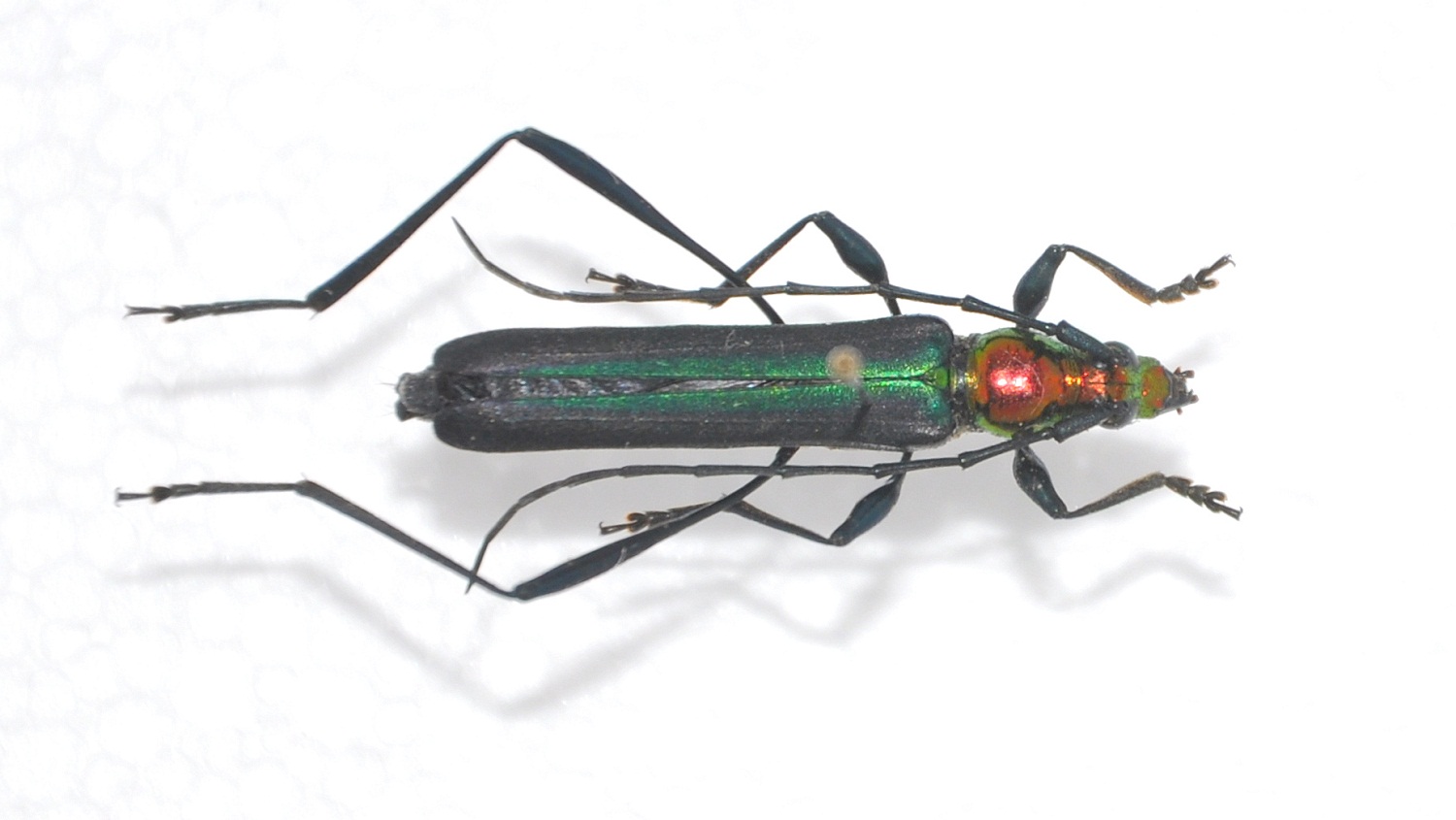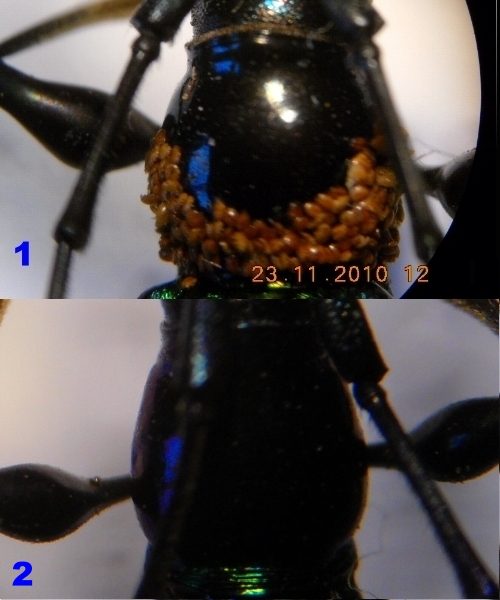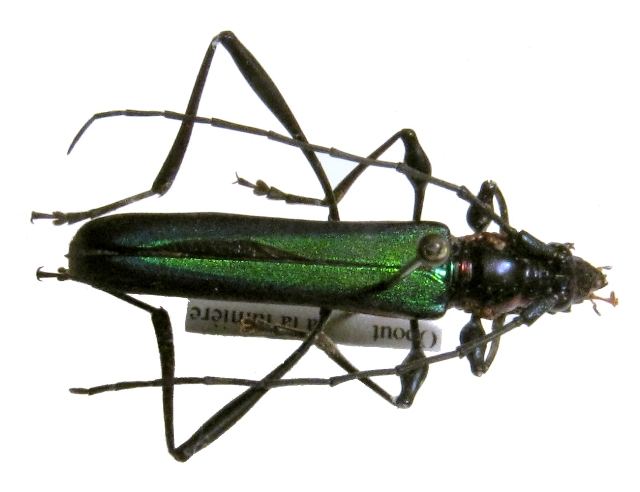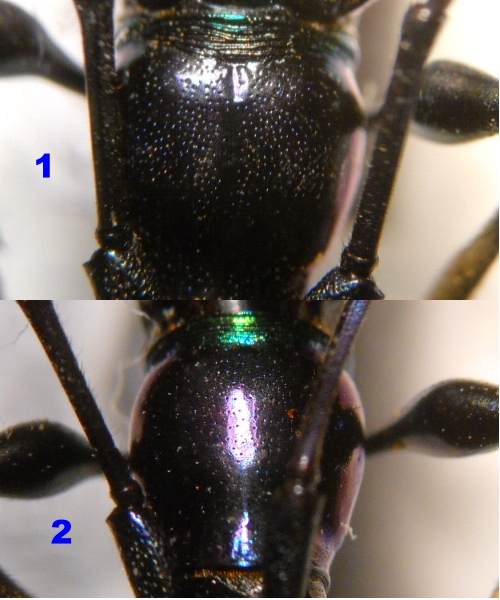| T O P I C R E V I E W |
| Pierre |
Posted - 21/11/2010 : 18:42:46

Hi Francesco,
impossible to put a name on this pretty fine thing... I have the same with bright green pronotum.
At a first glance it made me think about some Eulitopus, but the antennal structure does not fit.
Any idea? |
| 6 L A T E S T R E P L I E S (Newest First) |
| Pierre |
Posted - 23/11/2010 : 21:36:00
The rounded form is visible enough and shows what I observe on my beetle: I think that we have gracilis. But the colours are something really different!
I never have received blue specimen.
Thank you, Francesco, for your help. |
| Francesco |
Posted - 23/11/2010 : 13:37:56

mmhmm, I try to insert two other pictures... Maybe they are not clear enough, but if you enlarge the picture, it gets better. Unfortunately, all my E. gracilis have been covered with mites.
Fig. 1: E. gracilis
Fig. 2: E. splendidus.
The prothorax is rounded in the former species and oval in the latter one; the puncturing of the former one is finer.
Additionally, the elytra of gracilis are more than two times head and pronotum together (two times in splendidus). |
| Francesco |
Posted - 22/11/2010 : 18:17:43

Well. The other two differ in the prothoracic shape:
globose: gracilis (above)
conical: splendidus. |
| Pierre |
Posted - 22/11/2010 : 17:23:23
I would say, second case; distinct but fine and not especially dense puncturing. |
| Francesco |
Posted - 22/11/2010 : 17:02:44

First question:
pronotal puncturing strong and dense (1) or fine and sperse (2)?
First case: E. tenuis; second case: E. gracilis or E. splendidus. |
| Francesco |
Posted - 22/11/2010 : 16:30:31
It is a female of Eulitopus, subgenus Litomeces.
I go to take some pictures in order to help to the ID. |


